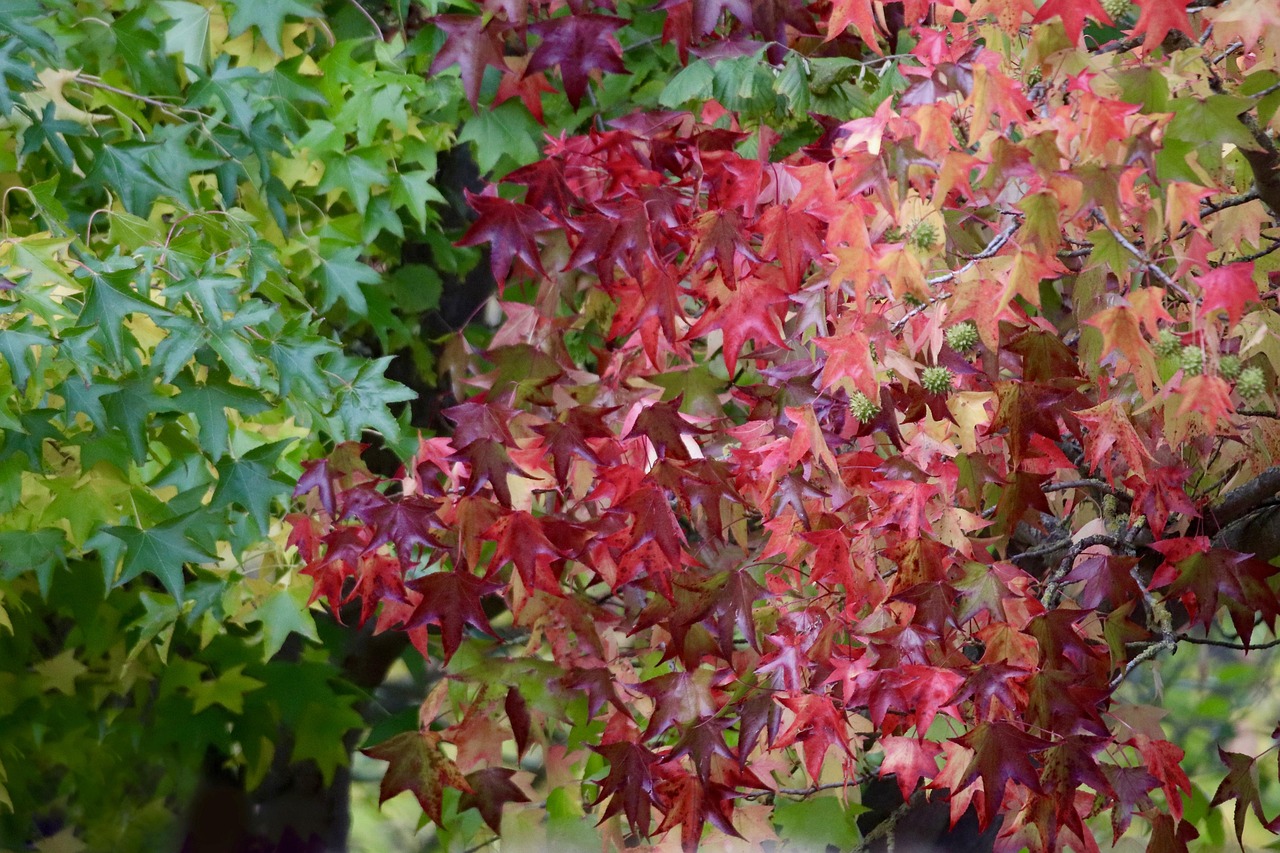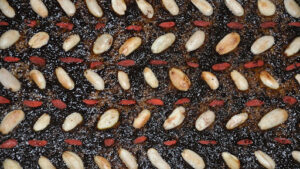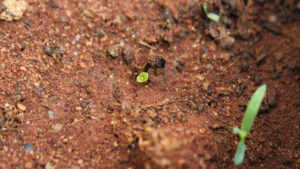American Holly Tree Seeds: Planting and Growing Guide

When I first thought about growing my own American holly trees, I was a bit intimidated by the idea of starting from seeds. It seemed like a long shot, honestly. But after doing some digging, I realized that while it takes patience, it’s entirely doable and quite rewarding. The potential of starting with American holly seeds is pretty amazing – you get to witness the entire life cycle of these beautiful, classic trees right from the beginning.
Introduction to American Holly Seeds & Their Potential
American holly trees (Ilex opaca) are well-loved for their glossy, deep green leaves and, of course, their vibrant red berries that really pop against the winter landscape. They’re not just pretty; they’re also important for wildlife, offering shelter and food for birds. Starting from American holly tree seeds allows you to cultivate these beneficial plants yourself.
It’s important to know that holly trees are dioecious, meaning you need both male and female plants for berries to form. Typically, it takes about five years to figure out which is which, so if you’re aiming for those iconic red fruits, you might want to buy a known female or plant several seeds to increase your chances. You can find more information on specific varieties like Holly ‘Lydia Morris’here.
Here’s a quick look at what you can expect:
- Appearance: Evergreen trees, often pyramidal, growing 15 to 50 feet tall.
- Foliage: Leathery, deep green leaves with sharp points.
- Fruit: Bright red berries on female trees, persisting through winter.
- Pollination: Requires a male plant for pollination to produce berries on female plants.
The journey from a tiny seed to a mature tree is a slow one, but it offers a unique connection to nature. It’s a project that requires a bit of foresight and a lot of patience, but the result is a magnificent tree that can be enjoyed for generations.
Germination rates for American holly seeds can vary, but often fall between 60-80%. The process itself is a bit involved, requiring specific pre-treatment and stratification steps to mimic natural conditions and break dormancy. It’s not as simple as just tossing them in the ground, but we’ll get into all those details soon.
Where & When to Collect Mature American Holly Seeds
Collecting seeds from American Holly (Ilex opaca) requires a bit of timing and observation. The best time to gather these seeds is in the fall, typically from September through November, just as the berries begin to ripen. You’ll notice the bright red color developing, which signals that the seeds inside are mature and ready. It’s important to collect from healthy, established trees. Look for trees that have a good display of berries, as this indicates successful pollination and seed development.
When you’re out looking for the perfect holly tree, keep in mind that American Holly is dioecious, meaning you need both male and female plants for berries to form. While you can collect seeds from any tree with berries, remember that only female trees produce them. If you’re aiming to grow your own berry-producing holly, you’ll eventually need a female tree, though it can take several years to determine the sex of a seedling. For now, focus on finding trees with abundant, ripe berries.
Here’s a quick rundown of what to look for:
- Timing: Late fall, after berries have turned bright red.
- Source: Healthy, mature trees with a good berry yield.
- Observation: Look for trees that have been well-pollinated, indicated by a full crop of berries.
When collecting, gently remove the berries from the branches. Avoid damaging the parent tree. I usually try to collect more than I think I’ll need, as not all seeds will be viable. It’s a good idea to have a few extra seeds to increase your chances of successful germination. Remember, these berries are toxic to humans, so handle them with care and keep them away from children and pets. Once collected, the seeds will need further processing, which we’ll cover next. For now, focus on finding those perfect, ripe berries. Storing seeds properly is key to maintaining their viability, and a cool, dry place, ideally below 45°F, is recommended for seed viability.
Collecting seeds is a rewarding part of the process, connecting you directly to the life cycle of these beautiful trees. Patience and careful observation are your best tools here.
Preparing and Cleaning American Holly Seeds for Planting
Once I’ve gathered my American holly seeds, the next step is to get them ready for planting. This involves a bit of cleaning to remove any leftover pulp from the berries. It might seem like a small detail, but it really helps prevent mold and makes sure the seeds have the best chance to germinate.
First, I take the seeds and give them a good rinse under cool water. Sometimes, I’ll gently rub them between my fingers to loosen any sticky residue. If there’s a lot of pulp, I might let them soak in water for a few hours, changing the water a couple of times. This helps to soften the pulp.
After rinsing, I spread the seeds out on a clean paper towel or a fine mesh screen. It’s important to let them air dry completely. I usually leave them in a well-ventilated spot, away from direct sunlight, for a day or two. Making sure the seeds are thoroughly dry before moving on to the next stage is key to preventing rot.
Here’s a quick rundown of the cleaning process:
- Rinse seeds under cool water.
- Gently rub to remove berry pulp.
- Soak briefly if pulp is stubborn.
- Air dry completely on a towel or screen.
I’ve found that this simple cleaning process really makes a difference. It might take a little extra time, but it sets the stage for successful germination later on. It’s all about giving those tiny seeds the best possible start.
Pre-treatment & Stratification of American Holly Seeds

Getting American holly seeds to sprout can feel like a bit of a puzzle, and that’s mostly because they need a good dose of patience and a specific kind of treatment before they’re ready to grow. I’ve found that skipping these steps usually leads to disappointment, so I always make sure to give them what they need. The key is mimicking the natural conditions they’d experience over a long winter.
First off, I like to give the seeds a good soak. Just pop them in some plain water for about 24 hours. This helps to soften the seed coat and get things moving. After that, it’s time for stratification, which is basically a fancy word for chilling the seeds to break dormancy. This usually involves two stages: a warm period followed by a cold period.
Here’s how I typically handle it:
- Warm Stratification: Mix the soaked seeds with a moist growing medium, like peat moss or vermiculite. You want it damp, not soaking wet. Put this mixture in a plastic bag or a sealed container. I usually keep this on top of my refrigerator, where it’s consistently around 70°F (21°C). This stage lasts for about 6 months. It’s important to check on them every so often for any signs of mold and to make sure the medium stays moist.
- Cold Stratification: After the warm period, it’s time for the cold. Move the bag or container to your refrigerator, aiming for a temperature around 40°F (4°C). This cold treatment usually needs to go for about 120 days, or roughly 4 months. Just like the warm phase, keep an eye on the moisture level and check for any germination starting.
This whole process, from soaking to the end of cold stratification, can take up to a year or even a bit longer. It sounds like a lot, but it really does make a difference in getting those little holly seeds to wake up and grow.
It’s important to remember that holly seeds can be a bit stubborn. They have a natural defense mechanism that prevents them from germinating too early, which is why this multi-step stratification process is so important for success. Patience is definitely a virtue when working with these seeds.
Sowing American Holly Seeds: Methods & Best Practices

After all that prep work, it’s finally time to get these American Holly seeds into the soil. I’ve found that patience is really the name of the game here, as germination can take a while. For sowing, I usually go with a simple method that seems to work well for me.
First, I prepare a seed-starting mix. A good blend is usually about equal parts peat moss and perlite, or you can use a standard seed-starting compost. I fill small pots or seed trays with this mix, making sure not to pack it down too tightly. Then, I lightly moisten the soil.
Next, I take my stratified seeds and place them on the surface of the soil. I aim for about 1 to 2 seeds per cell or small pot. After that, I cover them with a thin layer of the seed-starting mix, about a quarter-inch deep. Gently watering the surface again is important to ensure good seed-to-soil contact.
Here’s a quick rundown of what I do:
- Fill containers with a light, well-draining seed-starting mix.
- Place 1-2 stratified seeds on the soil surface.
- Cover seeds with about 1/4 inch of the mix.
- Water gently to settle the soil.
I then place the pots or trays in a location that gets bright, indirect light. Keeping the soil consistently moist, but not waterlogged, is key. I’ve noticed that a misting bottle is perfect for this, as it prevents disturbing the seeds. If you’re using a greenhouse or a propagator with a lid, that’s even better for maintaining humidity.
Germination can be a slow process, often taking anywhere from 12 to 16 months from the time of sowing, even after proper stratification. It’s important not to get discouraged if you don’t see sprouts right away. Continue to provide consistent moisture and light, and they should eventually emerge.
Some people prefer to sow directly outdoors in the fall, letting nature do the stratification and germination over the winter. If you choose this route, find a spot that’s protected from harsh weather and animal disturbance. I’ve tried both methods, and while indoor sowing gives me a bit more control, outdoor sowing can be simpler if you have the right conditions. Just remember that outdoor germination might take even longer, with sprouts appearing the following spring or even the spring after that.
Caring for Seedlings from American Holly Seeds
Once your American holly seeds have successfully germinated and you have tiny seedlings, the real work begins. It’s a delicate stage, and paying attention to their needs will make a big difference in their survival and eventual growth into strong trees. My experience has taught me that consistency is key here.
The most important thing to remember is to keep the soil consistently moist, but not waterlogged. Think of it like a wrung-out sponge – damp, but not dripping. Overwatering can lead to root rot, which is a quick way to lose your little holly plants. On the flip side, letting them dry out completely will stress them and can be fatal.
Here’s a breakdown of what I focus on:
- Light: Seedlings need bright, indirect light. A spot near a sunny window is usually good, but if the sun is too direct and hot, it can scorch those tender leaves. I often use a sheer curtain to diffuse the light if needed.
- Watering: As I mentioned, consistent moisture is vital. I check the soil daily by gently poking a finger into it. If the top half-inch feels dry, it’s time to water. I use a gentle spray bottle or a watering can with a fine rose to avoid disturbing the soil too much.
- Air Circulation: Good airflow helps prevent fungal diseases. I make sure the area where the seedlings are kept isn’t stagnant. Sometimes, a small, low-setting fan on a timer can help, but I’m careful not to blow them over!
- Temperature: Holly seedlings generally prefer moderate temperatures. I try to keep them in a range of 65-75°F (18-24°C) during the day and slightly cooler at night. Extreme temperature fluctuations aren’t ideal.
I’ve found that a simple soil mix works best. Something that drains well is a must. A blend of peat moss, perlite, and a bit of compost usually does the trick for me. It provides enough nutrients without holding too much water.
It’s easy to get anxious watching these tiny plants, wanting them to grow fast. But patience is a virtue when growing holly from seed. They are slow starters, and rushing them or over-fussing can do more harm than good. Let them develop at their own pace, and focus on providing the stable conditions they need.
As they grow a bit larger, I’ll start thinking about hardening them off, but for now, it’s all about that gentle, consistent care. It feels like nurturing a baby bird; you just want to give them the best start possible.
Transplanting & Establishing Young Trees from American Holly Seeds

Once your American holly seedlings have grown sturdy enough, it’s time to think about moving them to a more permanent spot. This is a big step for them, and for me, it’s always a bit nerve-wracking but exciting. I usually wait until they are a few inches tall and have developed a decent root system. The best times to do this are typically in the spring or fall. I find fall is often a bit easier because the soil is still warm, and there’s usually enough moisture to help them settle in without too much stress.
Before I even start digging, I prepare the new location. I make sure the soil drains well; holly doesn’t like to sit in soggy ground. I also like to amend the soil with some compost to give them a good start. When digging the hole, I aim for it to be two to three times the width of the seedling’s root ball, but no deeper than the root ball itself. This gives the roots plenty of room to spread out.
Here’s a quick rundown of how I approach the transplanting process:
- Gently remove the seedling from its current container or bed. Try not to disturb the roots too much. If the roots are tightly wound, I might gently tease them apart a little.
- Place the seedling in the prepared hole, making sure it’s standing upright and at the same depth it was before.
- Backfill the hole with the soil you removed, gently firming it around the base of the plant to eliminate large air pockets. Avoid packing it down too hard.
- Water the newly transplanted seedling thoroughly. This helps settle the soil and reduces transplant shock.
Aftercare is really where the magic happens for establishment. I make sure to water them regularly, especially during the first year. It’s not about drowning them, but keeping the soil consistently moist, not waterlogged. I also keep an eye out for any weeds that might try to compete for resources and remove them carefully.
It’s important to remember that young trees are more vulnerable. Protecting them from harsh winds and extreme weather, especially during their first winter, can make a big difference in their survival and growth. I often use a temporary windbreak if the location is particularly exposed.
I’ve found that patience is key. These trees grow slowly, but they are tough. Giving them the right conditions and a little attention in their early years will set them up for a long, beautiful life. It’s rewarding to see them grow from tiny seeds into majestic trees. For more on planting times,check out this guide.
Common Challenges & Tips for Success with American Holly Seeds
Growing American Holly from seed can be a rewarding experience, but it’s not without its hurdles. One of the most common issues I’ve encountered is the sheer patience required. These seeds have a notoriously long germination period, often taking 12 to 16 months even after proper stratification. Don’t get discouraged if you don’t see sprouts right away; consistency in care is key.
Another challenge is ensuring the seeds are viable and properly treated. Remember that holly seeds require a specific stratification process, involving both warm and cold periods. Skipping or improperly executing this step is a frequent reason for failed germination. I’ve found that keeping detailed notes on the stratification dates and conditions helps me stay on track.
Here are some common issues and how I’ve learned to address them:
- Slow Germination: As mentioned, this is normal. Continue to provide consistent moisture and temperature as per the stratification and sowing instructions. Resist the urge to dig up seeds to check on them.
- Mold or Fungus: This can occur during stratification if the growing medium is too wet or if there’s poor air circulation. I try to use a medium that’s moist but not soggy, and I periodically open the bags or containers to let them breathe.
- Identifying Sex: It can take years to determine if you have a male or female plant, and you need a female to get those iconic red berries. If you’re eager for berries, it’s often more practical to purchase a known female plant from a nursery or plant several seeds and hope for the best. Remember, it typically takes one male plant per acre of females to ensure pollination.
- Pest and Disease: While American Holly is generally quite hardy, young seedlings can be more susceptible. Keeping the area clean and ensuring good air circulation can help prevent many common problems.
When starting from seed, it’s important to manage expectations. Unlike buying a young tree, you’re embarking on a longer journey. The slow growth rate, especially in the initial years as the Black Hills Spruce focuses on root development, is something to be prepared for. This patience, however, leads to a strong, well-established tree.
Finally, remember that American Holly prefers slightly acidic, well-drained soil. While they are adaptable, providing the right conditions from the start will give your seedlings the best chance to thrive. Good luck with your holly seed project!
Growing American Holly from seeds can be tricky, but don’t let that stop you! Many gardeners find that understanding the common hurdles, like germination time and soil needs, makes all the difference. Ready to give it a try and see those beautiful berries? Visit our website for more expert tips and to get started on your holly growing journey!
Frequently Asked Questions
How do I know if my American Holly seeds will grow into a tree with berries?
It’s quite interesting; American Holly trees are either male or female. Only the female trees produce those lovely red berries. It can take about five years to figure out which is which. If you’re eager for berries, it’s often best to buy a female tree from a nursery or plant several seeds to increase your chances of getting a female tree.
When is the best time to collect American Holly seeds?
I find that the best time to collect seeds is when the berries are ripe, usually in the fall. You’ll see the bright red berries on the female trees. Make sure to gather them from healthy-looking trees.
What’s the trick to getting American Holly seeds to sprout?
These seeds can be a bit tricky! They often need a process called stratification, which mimics winter. I usually soak the seeds in water for a day, then mix them with moist material like sand or peat moss. After that, they need a period of cold, like in a refrigerator, for a few months, followed by a period of warmth. It’s a bit of a waiting game, and germination can take over a year.
How should I plant the American Holly seeds once they’re ready?
After stratification, I like to plant the seeds about a quarter-inch deep in a well-draining soil mix. Keeping the soil consistently moist is key. Some people sow them directly outdoors in the spring, expecting them to sprout the following year, while others start them indoors.
What kind of care do young American Holly seedlings need?
Once you have seedlings, they need consistent moisture. I make sure they are in a spot that gets good light but is protected from harsh winds. As they grow, I keep an eye on them, ensuring the soil doesn’t dry out completely. They are slow growers, so patience is important.
Are the berries from American Holly trees safe to eat?
This is an important point I always emphasize: the berries from American Holly trees are toxic to humans. While they are a wonderful food source for birds in the winter, I strongly advise against anyone eating them.



